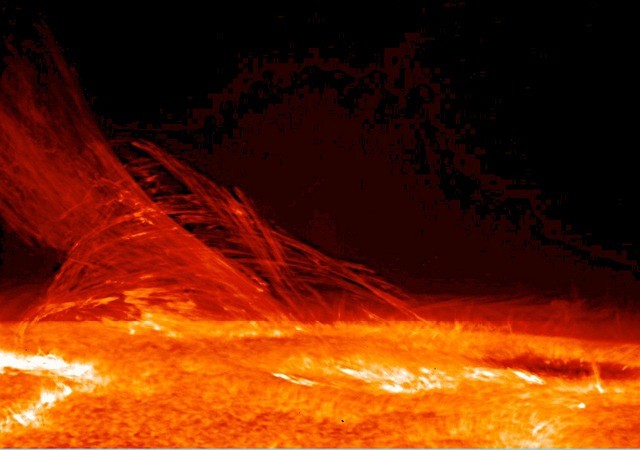Auroras observed in November, reaching Italy and Texas, suggested a solar coronal mass ejection's impact. Yet, a monumental 1872 solar storm surpassed this, creating global auroras visible near the equator.
Recent research, titled "The Extreme Space Weather Event of 1872 February: Sunspots, Magnetic Disturbance, and Auroral Displays" published in The Astrophysical Journal, emphasizes the commonality of extreme solar storms, highlighting potential disruptions to today's technology-dependent society.

Lessons From One of the Strongest Solar Storms in History
Today's technology-dependent world relies on infrastructure like power grids, communication systems, and satellites; but it also exposes itself to heightened vulnerability during large geomagnetic storms.
Designated Assistant Professor Hayakawa underscores the challenges society, particularly in urban areas, would face with prolonged power supply disruptions. These storms possess the potential to significantly impact power grids, communication systems, airplanes, and satellites, posing a daunting challenge to maintaining our way of life without such infrastructure.
While extreme solar storms are rare, recent studies highlight the significance of events like the Carrington storm in 1859 and the New York Railroad storm in 1921.
Meanwhile, the new study emphasizes the need to recognize the Chapman-Silverman storm in February 1872 as another extreme event with global consequences. This storm, originating from a medium-sized but complex sunspot group near the solar disk center, triggered one of the most extreme magnetic storms in recorded history.
The multidisciplinary team, led by Nagoya University in Japan, the US National Solar Observatory, and the Royal Observatory of Belgium, utilized historical records and modern techniques to assess the storm's solar origin and its terrestrial impacts.
The researchers delved into largely forgotten sunspot records from Belgian and Italian archives for the solar origin, while geomagnetic field measurements and accounts of the visual aurora from diverse locations were analyzed for terrestrial impacts.
More than 700 auroral records confirmed that the night sky was illuminated by spectacular displays from the polar regions to the tropics, solidifying the Chapman-Silverman storm's status as one of the most extreme geomagnetic storms in history.
As the world approaches the predicted maximum of Solar Cycle 25 in 2025, the study underscores the importance of preserving and analyzing historical records to understand and mitigate the potential impact of future space weather events.
What Happens During Solar Maximum
The Sun operates on an approximately 11-year cycle marked by varying levels of solar activity, transitioning from a period of minimal activity called "solar minimum" to the peak of activity known as "solar maximum."
During the solar maximum, the Sun exhibits heightened solar flares, sunspots, and coronal mass ejections (CME). As a burning ball of gas and plasma, the Sun's surface temperatures surpass 5,000°C, while its nuclear fusion reactor core reaches temperatures exceeding a million degrees, leading to violent interactions, including solar flares.
Solar flares, substantial eruptions of electromagnetic radiation from the Sun's surface, typically occur in active regions characterized by strong magnetic fields associated with sunspots.
The solar cycle has been under observation since 1755, with the current cycle, Solar Cycle 25, entering its solar maximum, expected to peak in 2024-25. Although predictions indicated a moderate peak, the actual rise of Solar Cycle 25 has surpassed forecasts, showing signs of reaching a scale comparable to Cycle 23, which peaked in 2001.
While experts anticipate a larger cycle than its predecessor, they project it to be fairly moderate. Solar astrophysicist Professor Mike Wheatland notes the potential for severe space weather storms during this cycle, emphasizing the complexity of predicting solar cycles. Despite the challenges, scientists are actively studying the Sun to understand and mitigate potential space weather impacts.
READ ALSO: Centuries-Old Royal Chronicles From Korea Unveil the Mysterious Shortened Solar Cycles of the 'Maunder Minimum
Check out more news and information on Solar Cycle in Science Times.












